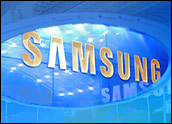
Samsung reported record second-quarter profits on Friday, but investor concerns drove down the company’s share prices nevertheless.
Its flagship Galaxy S4 smartphone did not sell as well as expected, and there are indications that demand for high-end devices that fetch a premium price and offer maximum profits is falling.
Meanwhile, vendors such as Huawei and ZTE are making great strides in developing nations, where mobile phone sales are growing fastest.
It’s not likely that Samsung will go the way of BlackBerry or HTC, however, as it’s a highly diversified multinational conglomerate — or chaebol in South Korea — with multiple subsidiaries and affiliated businesses. It is a major player in various industries, including IT; shipbuilding; construction; life insurance; aerospace; surveillance and defense; and advertising.
The Sinking S4 Ship
“Sales [of the S4] were disappointing … but it’s irrelevant whether they made the same kind of numbers as last year — they sold millions and millions,” Ramon Llamas, a senior analyst at IDC, told the E-Commerce Times.
Samsung smartphone sales hit new heights in the wake of the Galaxy S4 launch, and, by the end of the second quarter, the company shipped more units than the next four vendors combined, accounting for nearly one-third of the entire smartphone market, IDC’s Q2 figures show.
Samsung reportedly sold 20 million Galaxy 4 smartphones, but the company does not provide independent proof of sales figures, and it counts the number of items shipped to its distribution chain, not the number sold.
Further, Samsung released five S4 models in June, including a Google Play edition and an LTE version. It’s not clear whether it counted all five of them or how that variety might impact the market. The S4 Mini is in a different class from the Zoom, which is a camera with a phone attached, for example.
Samsung planned to make just 6.4 million S4s in July — half the production figure for May — and it has been in crisis mode due to the S4’s poor sales figures, according to reports.
Samsung did not respond to our request to comment for this story.
Sell, Sell, Sell
The high end of the market is increasingly becoming saturated, Michael Morgan, a senior analyst at ABI Research, told the E-Commerce Times.
This can be mitigated by companies increasing their marketing budgets — as Samsung has done — in order to push sales of high-end smartphones. However, pushing a premium device is costly and gives a lower marginal rate of return on investment, Morgan said.
Market saturation makes things worse because “you’re not getting greenfield customers any more — you have to steal them from other vendors, and that increases customer acquisition costs,” Morgan continued.
It’s not possible to say outright whether increasing marketing budgets is the right or wrong thing to do, Larry Chiagouris, professor of marketing at Pace University, pointed out. “The real challenge is allocating the budgets against the correct target audiences.”
Whither the High-End Smartphone?
The market for premium smartphones is shrinking fast.
“Huawei, ZTE, Lenovo and Alcatel Mobile Phones are doing well with low-cost Android smartphones for emerging markets where there are no subsidies,” ABI’s Morgan said. “People are extremely price-conscious, and the smartphone is extremely important to them because they don’t have computers.”
While Samsung has products at the high and low ends, it will face “some serious pressure from companies that have a home field advantage which outweighs your brand strength … and are willing to accept low-profit margins” — which is happening with Huawei and the other three companies, Morgan pointed out.
Meanwhile, white-label manufacturers are posing a threat at the very low end by getting reference designs from companies such as Qualcomm and MediaTek, and “you can get a (US)$150 smartphone with a quad-core processor in it,” Morgan continued. “Some vendors, like Alibaba, sell smartphones at no margins, seeking to get their money back on accessories.”
Then there’s the competition from other would-be players at the high end. While Samsung smartphone sales will remain strong, “the question is, how much further can you sustain that growth?” IDC’s Llamas said. “It’s not like last year, where the heir-apparents were Apple and Samsung; now, LG and Nokia are in play, and HTC is hopefully hitting the right track.”
Samsung and other vendors have to adjust investor expectations, adjust their marketing plans to target the next most attractive target audience if current markets are saturated, and adjust product development plans so that the new features coming out are worth trading in older devices, Pace University’s Chiagouris told the E-Commerce Times.
“Low-cost smartphones are absolutely an option, but Samsung shouldn’t shy away from the high end of the market,” Llamas commented, “because if they do, someone else will step in.”
The Future for Samsung
Samsung’s targeting the China mobile phone market, but its highly diversified portfolio may protect it as smartphone sales decline.
The company plans to invest a record $21.6 billion in capital investments — nearly $12 billion of that in its semiconductor business and about $6 billion more in its display panel activities. It projects demand for mobile DRAMs to be steady and for NAND gates to grow.
Samsung expects demand for tablet and smartphone panels to grow, and for competition in premium TVs to increase.
The company is also reportedly investing in service robots.






















































Social Media
See all Social Media